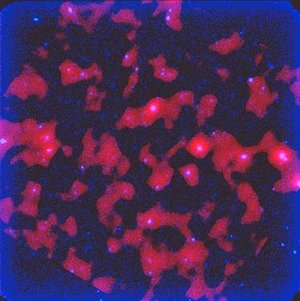Accept all cookies Accept only essential cookies See our Cookie Notice

About ESA
The European Space Agency (ESA) is Europe’s gateway to space. Its mission is to shape the development of Europe’s space capability and ensure that investment in space continues to deliver benefits to the citizens of Europe and the world.
Highlights
ESA - United space in Europe
This is ESA ESA facts Member States & Cooperating States Funding Director General Top management For Member State Delegations European vision European Space Policy ESA & EU Space Councils Responsibility & Sustainability Annual Report Calendar of meetings Corporate newsEstablishments & sites
ESA Headquarters ESA ESTEC ESA ESOC ESA ESRIN ESA EAC ESA ESAC Europe's Spaceport ESA ESEC ESA ECSAT Brussels Office Washington OfficeWorking with ESA
Business with ESA ESA Commercialisation Gateway Law at ESA Careers Cyber resilience at ESA IT at ESA Newsroom Partnerships Merchandising Licence Education Open Space Innovation Platform Integrity and Reporting Administrative Tribunal Health and SafetyMore about ESA
History ESA Historical Archives Exhibitions Publications Art & Culture ESA Merchandise Kids Diversity ESA Brand Centre ESA ChampionsLatest
Space in Member States
Find out more about space activities in our 23 Member States, and understand how ESA works together with their national agencies, institutions and organisations.
Science & Exploration
Exploring our Solar System and unlocking the secrets of the Universe
Go to topicAstronauts
Missions
Juice Euclid Webb Solar Orbiter BepiColombo Gaia ExoMars Cheops Exoplanet missions More missionsActivities
International Space Station Orion service module Gateway Concordia Caves & Pangaea BenefitsLatest
Space Safety
Protecting life and infrastructure on Earth and in orbit
Go to topicAsteroids
Asteroids and Planetary Defence Asteroid danger explained Flyeye telescope: asteroid detection Hera mission: asteroid deflection Near-Earth Object Coordination CentreSpace junk
About space debris Space debris by the numbers Space Environment Report In space refuelling, refurbishing and removingSafety from space
Clean Space ecodesign Zero Debris Technologies Space for Earth Supporting Sustainable DevelopmentApplications
Using space to benefit citizens and meet future challenges on Earth
Go to topicObserving the Earth
Observing the Earth Future EO Copernicus Meteorology Space for our climate Satellite missionsCommercialisation
ESA Commercialisation Gateway Open Space Innovation Platform Business Incubation ESA Space SolutionsEnabling & Support
Making space accessible and developing the technologies for the future
Go to topicBuilding missions
Space Engineering and Technology Test centre Laboratories Concurrent Design Facility Preparing for the future Shaping the Future Discovery and Preparation Advanced Concepts TeamSpace transportation
Space Transportation Ariane Vega Space Rider Future space transportation Boost! Europe's Spaceport Launches from Europe's Spaceport from 2012Latest

ISO observes cosmic IR background galaxies
Thank you for liking
You have already liked this page, you can only like it once!
Two dozen distant galaxies that are undergoing a process of intense evolution - either merging to larger ones or reaching their final shape - have been detected by a team of French astronomers using ESA's Infrared Space Observatory (ISO). These are the first individual objects know to contribute their energy to the Cosmic Infrared Background, a radiation that fills the entire Universe. The newly-found galaxies are indeed like the 'pattern' in this cosmic wallpaper. The oval-shaped image at top-left is a map of the infrared sky obtained by the earlier IRAS satellite. It shows in red the emission from objects in our own Galaxy; this acts like a curtain making it difficult for astronomers to see through. For this observation, ISO was pointed at a region of the southern hemisphere called the Marano Fields, which is especially clean of emission from foreground sources. The new population of galaxies now identified emit so faintly that astronomers could only detect them by using the ISOPHOT spectrophotometer ISO, the best and most sensitive infrared space telescope so far. However, astronomers consider these galaxies to be the tip of the iceberg and expect to find many more sources when searching with more sensitive instrument, such as the FIRST telescope already planned by ESA as ISO's successor. [Image Date: 24-07-98] [98.07.001-001]
-
CREDIT
IRAS: IRAS sky survey Atlas, Wheelock et al. 1994 FIRBACK: ESA/ISO/ISOPHOT and Puget J.L., Lagache G. & Dole H. -
LICENCE
ESA Standard Licence

ISO discovers dust between galaxies

ISO searches for the origins of stars and planets

ISO reveals Andromeda's invisible rings

ISO observes starburst galaxies















 Germany
Germany
 Austria
Austria
 Belgium
Belgium
 Denmark
Denmark
 Spain
Spain
 Estonia
Estonia
 Finland
Finland
 France
France
 Greece
Greece
 Hungary
Hungary
 Ireland
Ireland
 Italy
Italy
 Luxembourg
Luxembourg
 Norway
Norway
 The Netherlands
The Netherlands
 Poland
Poland
 Portugal
Portugal
 Czechia
Czechia
 Romania
Romania
 United Kingdom
United Kingdom
 Slovenia
Slovenia
 Sweden
Sweden
 Switzerland
Switzerland

























